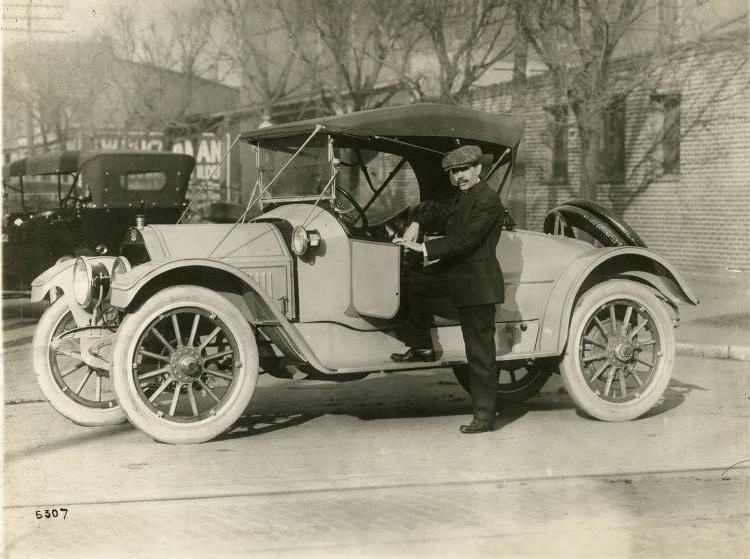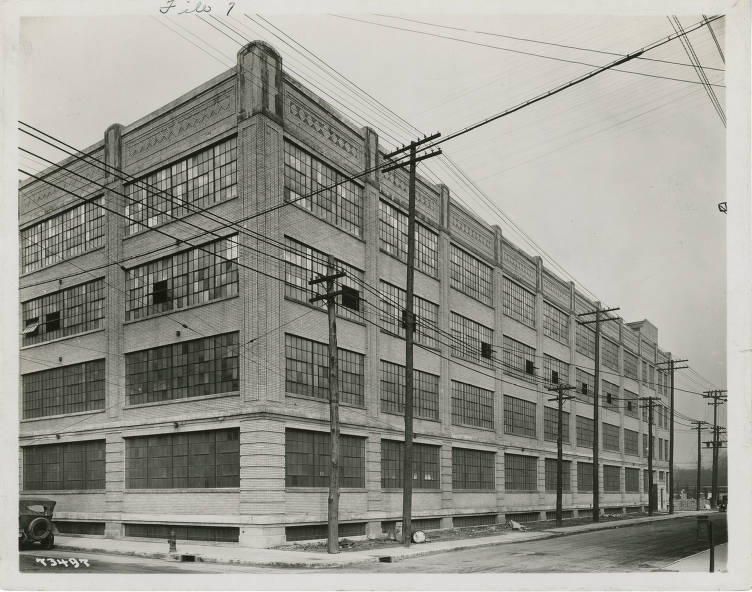Joseph Jarrett Cole (1869-1925), a native of Connersville, Indiana, and a graduate of the Richmond Business College, first came to Indianapolis in 1888 as an employee of the Perry Manufacturing Company.

From 1896 to 1904, Cole worked for the Moon Brothers Carriage Company of St. Louis. In 1904, he purchased the Gates-Osborne Buggy Company of Indianapolis and formed the Cole Carriage Company. The first Cole motor cars were built by the Cole Carriage Company in 1908.
Realizing the great future of the “horseless carriage,” Cole decided to concentrate his energies on auto production and formed the Cole Motor Car Company in 1909. The Cole was a luxury car in competition with General Motor’s Cadillac. Unlike General Motors (GM) cars, which were manufactured solely with GM components, the Cole was assembled with parts from various manufacturers who upheld the highest standards in quality and craftsmanship. As a result, the Cole was coined as “the standardized car.” The Cole, therefore, cost around $2,500 in 1913 (equal to $65.000 in 2020) in comparison to the Ford Model-T that cost $550.

To promote its product, Cole proved innovative in its advertising. Cole cars competed in various auto races including the 1911 . In the fall of that same year, a Wright biplane equipped with a Cole engine participated in a coast-to-coast air race. In Indianapolis, a Cole hot air balloon hovered over area events. The company also marketed its automobiles with Cole cigars and a Cole baseball team.
Cole introduced a 346-cubic-inch V8 engine in January 1914, second only to Cadillac which began offering a car with the same size engine in September 1914. Cole came in second only to Cadillac again in 1919, this time in the overall sale of luxury vehicles. The company also produced the first detachable head on the engine for easy maintenance, developed a cutting-edge Aero Eight engine, and was the first to use balloon tires. The Cole paced the field of the 1924 Indianapolis 500.

Despite such marketing efforts, both sales and auto production declined sharply during the post-World War I years. Cole continued to produce high-priced cars with an average cost of over $3,000 in the early 1920s, while the Model T declined in price to $265. In January 1925, Cole elected to liquidate while the company was still solvent. Joseph Jarrett Cole died on August 8, 1925, and the company closed by the end of that year.
Throughout its 16 years of auto production, 40,717 Cole cars were assembled, most of them in the Indianapolis factory building at 730 East Washington Street, now listed on the National Register of Historic Places. Most Coles were scrapped to support the World War II effort. Only 77 Cole automobiles are known to have survived. The remaining examples, therefore, are highly prized by collectors.
In 1997, Marion County purchased the building for housing the Marion County Jail Annex 2, for which it won an adaptive reuse award from the Historic Landmarks Foundation () in 1998. After the Indianapolis-Marion County Justice Center opened in May 2022, Indianapolis-based 1820 Ventures won a $120 million bid to redevelop the property for mixed-use, including a live music venue, affordable housing, and education centers.

Help improve this entry
Contribute information, offer corrections, suggest images.
You can also recommend new entries related to this topic.